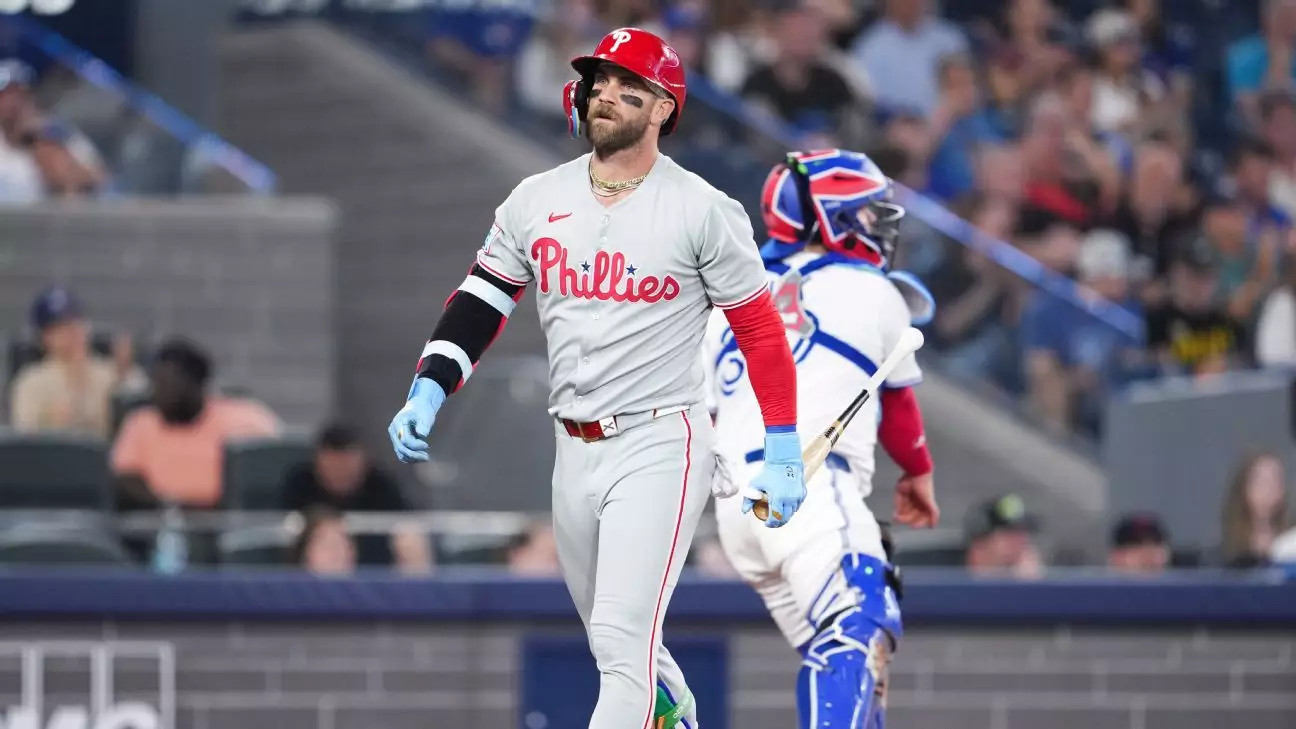Bryce Harper’s long-awaited return to the Phillies’ lineup highlights more than just a physical comeback—it reveals the heart of a player determined not to be defined by injury setbacks. After grappling with persistent right wrist inflammation that kept him sidelined for nearly a month, Harper returned to the field ready to contribute once again. This isn’t just a story of recovery but a testament to Harper’s relentless approach to overcoming obstacles, especially given the chronic nature of his wrist issues which have trailed him into this season.
Unlike many players who might hesitate to play through discomfort, Harper exemplifies persistence. His own candid admission—that he felt a plateau in his wrist’s healing and that continuing to rest wasn’t improving it—exemplifies his realistic mindset. The decision to return wasn’t born out of rushing back prematurely but out of a stoic understanding of physical limits and the necessity to push forward despite them.
The Burden of Playing Through Pain
Harper’s wrist troubles didn’t begin with this injury stint. According to Harper himself, discomfort has lingered since last season, highlighting a chronic issue that often flies under the radar in professional sports. The physical toll this takes cannot be overstated. Maintaining a batting average of .258, hitting nine home runs, and stealing eight bases in 57 games while battling pain demonstrates a level of grit and professionalism few players can claim.
Such conditions inevitably impact performance and can alter a player’s approach at the plate and in the field. Harper’s reluctance to discount the impact of his injury on both his hitting and throwing reflects an authentic, vulnerable athlete who wrestles constantly between physical limitation and competitive drive.
The Ripple Effect on Phillies’ Dynamics
Harper’s absence significantly shifted the Phillies’ dynamic, a reality underscored by the team’s 13-14 record without him, despite still leading the NL East. This paradox speaks volumes about team depth but also about the irreplaceable intangible leadership Harper provides. The team’s decision to designate Buddy Kennedy for assignment upon Harper’s return highlights the difficult roster management choices teams face when balancing star power and young talent.
The emergence of rookie Otto Kemp during Harper’s absence adds an intriguing layer to the Phillies’ evolving lineup. Kemp’s versatility and performance provide a promising backup plan, but Harper’s statement that Kemp would remain in the lineup signals a healthy internal competition, which could sharpen both players’ performances.
Balancing Legacy and Present Challenges
Now in the seventh year of a historic 13-year, $330 million contract, Harper carries immense expectations both on and off the field. Leading the Phillies to three consecutive postseason appearances, including a memorable NLCS MVP performance in 2022, Harper represents not just a player but a franchise cornerstone. Yet, this return reminds us that longevity at the elite level comes with inevitable challenges, including managing the physical toll that elite performance demands.
Harper’s willingness to consider different roles, such as potentially stepping into the designated hitter position, underscores his adaptability and team-first mentality. It also signals a recognition that sustaining peak output requires sometimes reevaluating one’s role for the good of the team.
The Larger Narrative of Harper’s Career
Harper’s career is often defined by his prodigious talent and fiery competitiveness. But this phase of his journey shines light on his resilience and maturity. Choosing to play through persistent pain rather than opting for prolonged rest spells out a complex balance between ambition and self-preservation. His day-to-day status moving forward will be a key storyline, not merely as a health update but as a testament to an athlete refusing to let adversity dictate his trajectory.
In Harper, the Phillies have an icon who carries the dual burden of star power and chronic injury awareness—a reminder that even the brightest stars must navigate the often-unseen struggles behind their brilliance. This return isn’t just about Harper swinging the bat again; it’s about what it takes to continue shining in spite of the shadows lurking beneath the surface.

